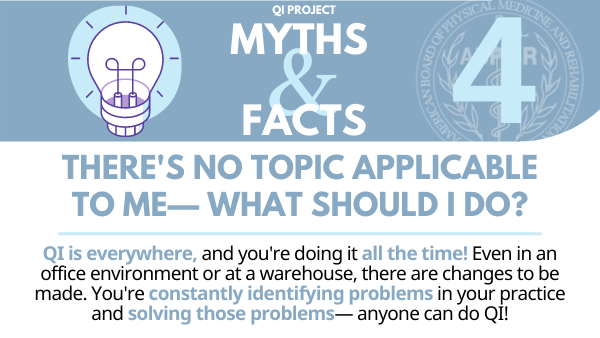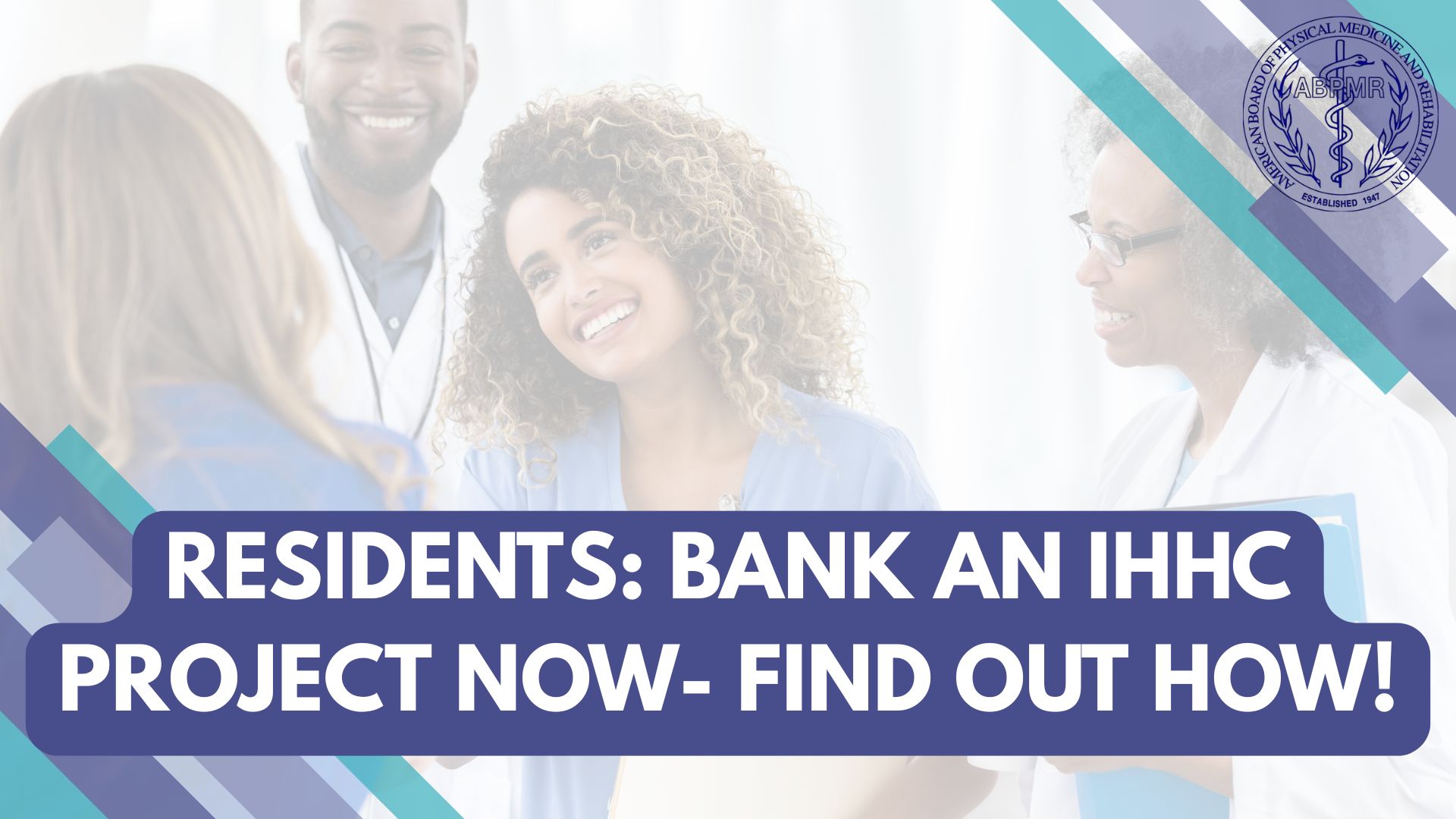CC
QI Project Series: You're Already Doing QI

In this News Center series, we discuss common Quality Improvement (QI) project misconceptions and give the real facts about the process of completing a project. For more information on QI projects, to see project topics, and to begin your own project, visit the QI project resources page.
Myth: There’s no QI project topic applicable to me because my practice is so unique/I’m not in patient care.
Truth: QI is everywhere, and you’re doing it all the time!
If you feel there’s no QI project topic that’s applicable to your specific practice or what you do every day, pause and take a look at your work environment. What is something in your daily operations that could be improved? What process could be more efficient? Has your team identified a problem that needs addressed? What is a stressor or frustration you wish you could change?
Even in an office environment or at a warehouse, there is a change that could be made to save money, time, or even save lives. You may not realize it, but you’re constantly identifying problems in your work life and implementing changes to solve them. The QI requirement for ABPMR is simply taking those small changes you’re already doing and writing down your process of fixing or improving the problem.
Examples of non-medical/non-practice QI project ideas
-
Diversity and Inclusion: Participation and contributions from diverse individuals is critical to the future of medicine and our civil society. Could you make improvements in staff and resident diversity, unconscious bias in payer and insurance considerations, holiday considerations, or patient satisfaction measures? Do you have your own idea for making a small change in this vital area?
-
Improving Communication: Effective communication is important in all professions. Consider this project if trainees describe your communication as too abrupt/directive/distant, patients have requested diagnosis-specific education, or you see opportunities to improve communication about next appointments or other care aspects.
-
Decreasing Burnout: Burnout is a national problem in healthcare due to factors like EMR burdens, decreased reimbursements, increased requirements and policing of documentation, insurance denials, loss of autonomy, and more. This project could help identify and address a burden on your staff— or even yourself— that is contributing to burnout in your everyday work.
-
Create your own: Still not sure what to do? Don’t forget that create your own project is an option! This option allows you to make your project focus relevant to what you do and see in your daily practice.
Anyone can do QI, and you already are! Just follow the steps to identify, consult, pre-measure, make a change, and re-measure, and it counts as a QI project!
To see more QI project resources, visit the QI project resources page or the ABPMR News Center to see examples of completed projects. We recently added 12 new Guided QI Projects, for a total of 20 free options from the ABPMR— read descriptions of all the new projects here.

